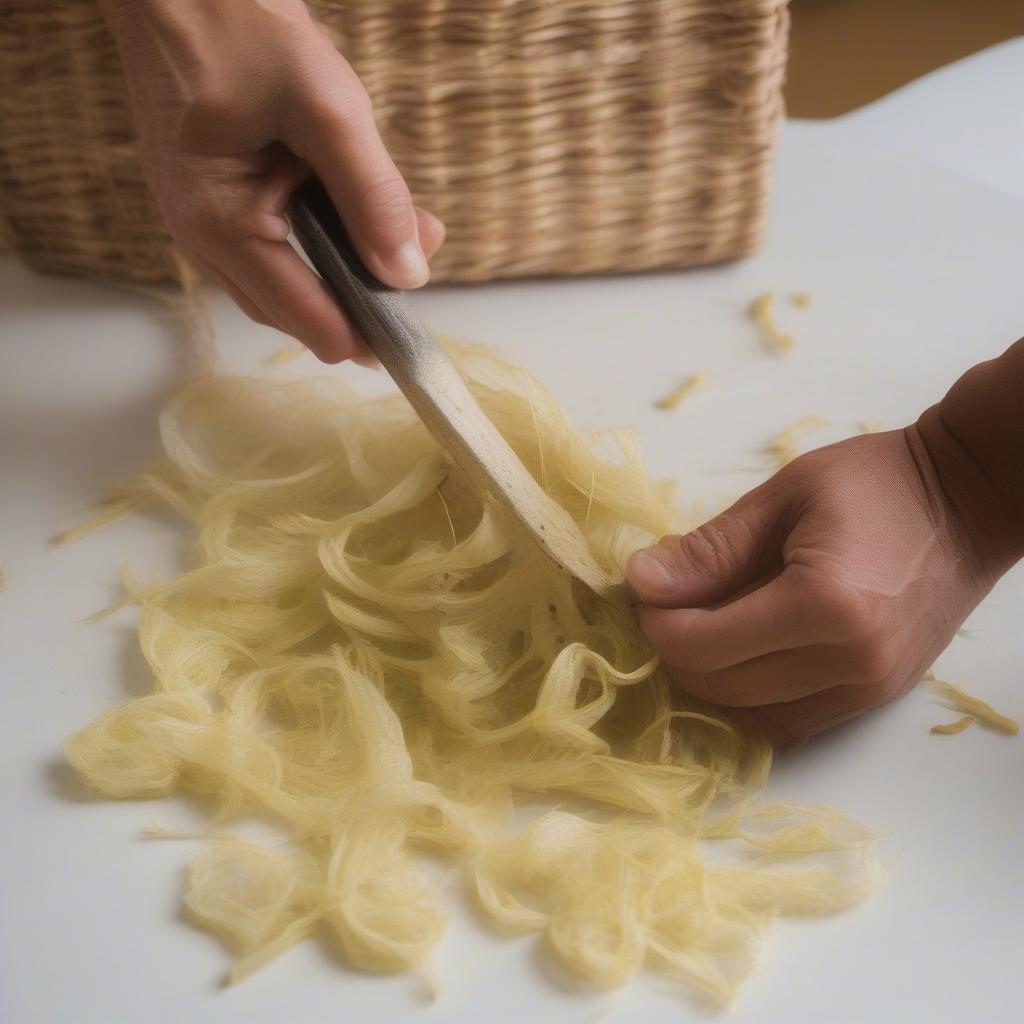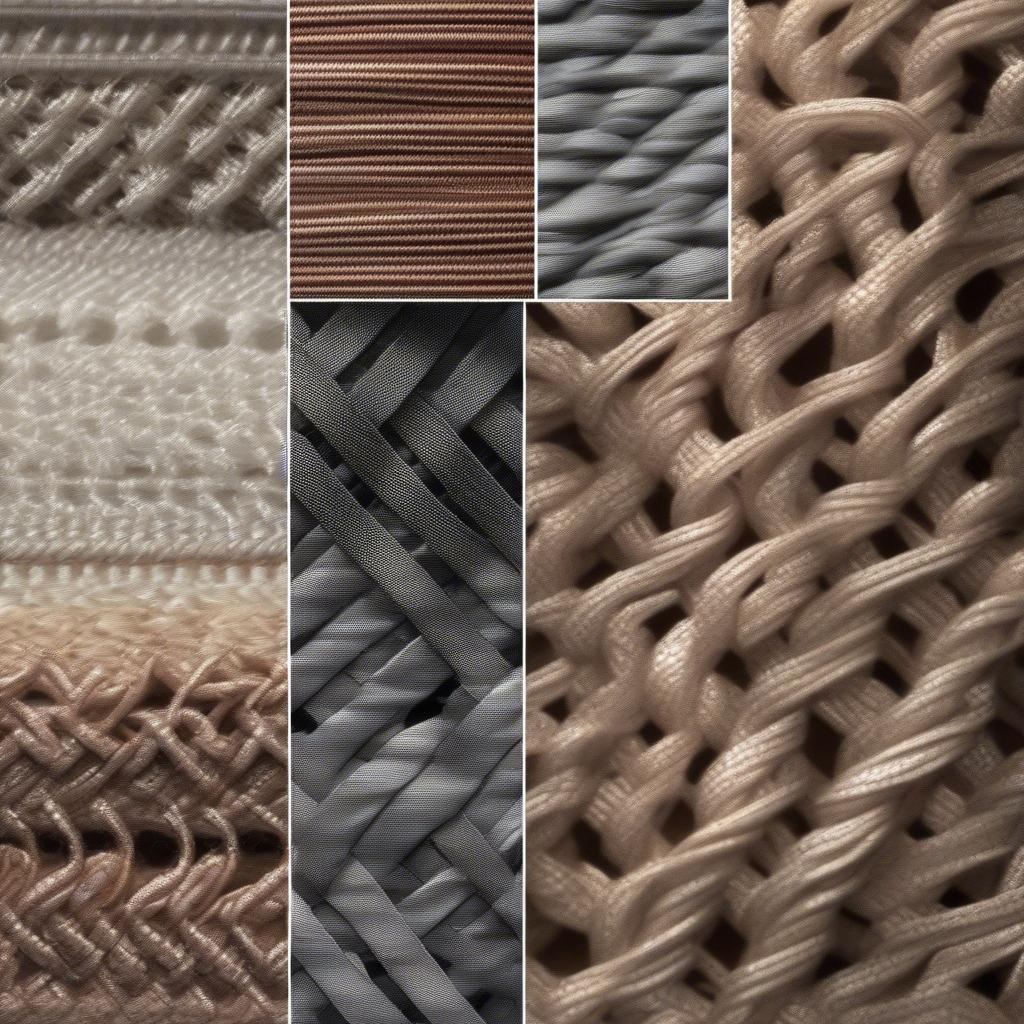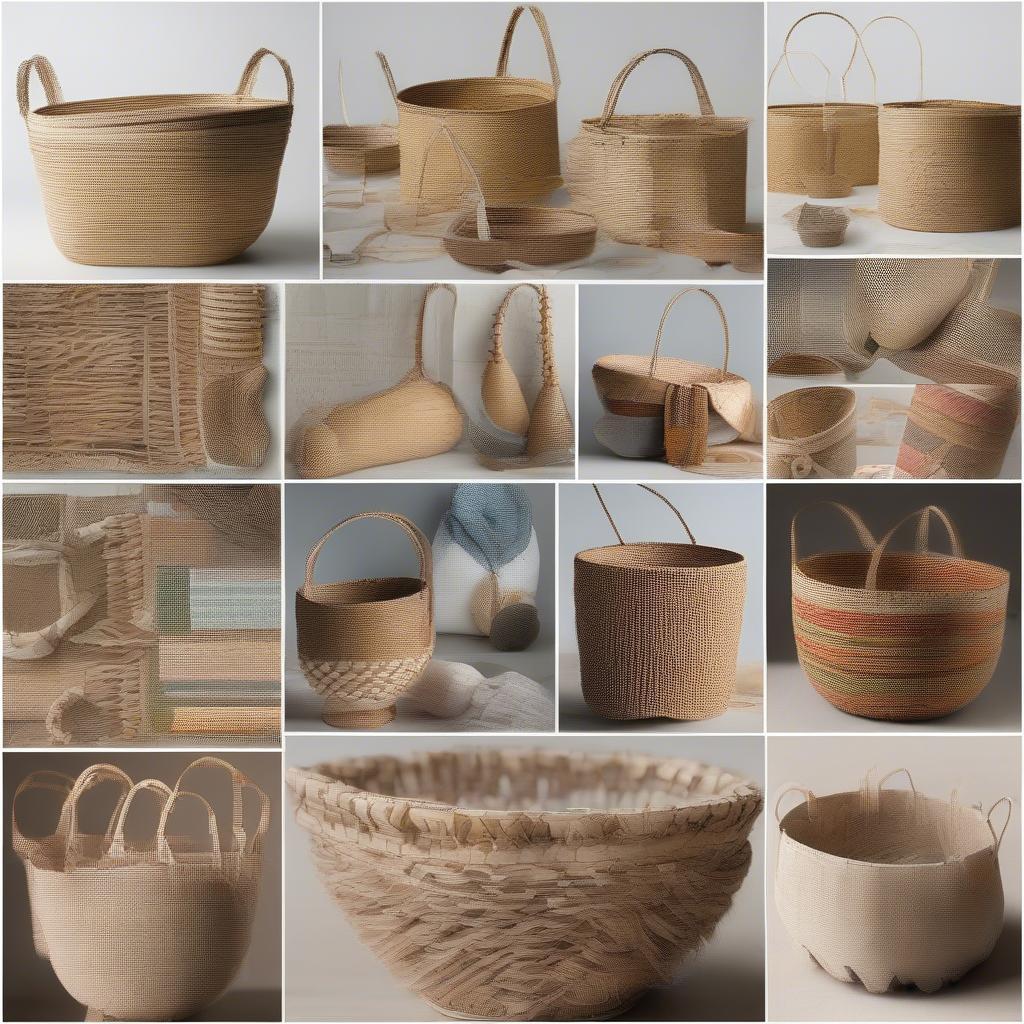Basket Weaving
Weaving Baskets Using Loopha Peel: A Comprehensive Guide
Weaving Baskets Using Loopha Peel offers a unique and sustainable approach to basketry. This guide delves into the art of loopha peel basket weaving, from material preparation to finishing techniques, providing valuable insights for both beginners and experienced artisans.
Understanding Loopha Peel and Its Benefits
Loopha peel, derived from the loofah gourd, is a surprisingly versatile material for basket weaving. Its natural texture and strength make it an excellent alternative to traditional materials like wicker or rattan. Using loopha peel also promotes sustainability, as it utilizes a readily renewable resource.
- Durability: Loopha peel baskets are known for their resilience and ability to withstand wear and tear.
- Sustainability: Harvesting loopha peel promotes eco-conscious crafting by utilizing a renewable plant resource.
- Unique Texture: The distinctive texture of loopha peel adds a touch of rustic charm to finished baskets.
- Lightweight: Despite its strength, loopha peel is lightweight, making it easy to work with and resulting in manageable finished products.
 Preparing Loopha Peel for Basket Weaving
Preparing Loopha Peel for Basket Weaving
Preparing Loopha Peel for Weaving
Before you begin weaving, the loopha peel needs to be properly prepared. First, allow the loofah gourds to fully dry. Once dried, the outer skin can be easily peeled away. Remove any remaining seeds and pulp. Next, cut the peel into strips. The width of the strips will depend on the desired basket size and weave pattern. Soaking the strips in warm water for a short period can make them more pliable and easier to work with.
- Drying: Ensure the loofah gourds are completely dry before peeling.
- Cleaning: Thoroughly remove seeds and pulp from the inner surface of the peel.
- Cutting: Cut the peel into uniform strips, adjusting the width based on your project.
- Soaking (optional): Soften the strips in warm water for increased flexibility.
 Different Loopha Peel Basket Weaving Techniques
Different Loopha Peel Basket Weaving Techniques
Weaving Techniques for Loopha Peel Baskets
Several weaving techniques can be employed with loopha peel, each yielding a unique aesthetic. Coiling is a popular method, involving wrapping the loopha peel around a core material to create a sturdy base and build up the basket’s sides. Twining and plaiting are other common techniques, offering different levels of complexity and visual interest.
- Coiling: A strong and versatile technique ideal for creating robust baskets.
- Twining: A method that interlaces the loopha peel strips to form a flexible and open weave.
- Plaiting: A simple yet effective technique, suitable for creating flat or three-dimensional basket structures.
“Loopha peel’s natural texture lends itself beautifully to various weaving techniques,” says renowned basket weaver, Amelia Reed. “Its flexibility allows for intricate designs and its strength ensures durability.”
Finishing Your Loopha Peel Basket
Once the weaving is complete, finishing touches are essential for enhancing the basket’s appearance and longevity. Trimming any excess loopha peel and securing the ends neatly will give the basket a polished look. Consider adding a handle or decorative elements. Applying a sealant can protect the basket from moisture and enhance its durability.
- Trimming: Carefully trim any loose or protruding loopha peel ends.
- Securing: Securely fasten the ends of the loopha peel strips to prevent unraveling.
- Handles and Decoration: Add handles or decorative elements for functionality and aesthetic appeal.
- Sealing: Apply a sealant to protect the basket from moisture and increase its lifespan.
 Examples of Finished Loopha Peel Baskets
Examples of Finished Loopha Peel Baskets
Conclusion
Weaving baskets using loopha peel is a rewarding craft that combines sustainability with artistic expression. By understanding the material’s properties and mastering the basic weaving techniques, you can create beautiful and functional baskets. So, gather your materials and embark on this fulfilling creative journey!
FAQs
- Is loopha peel difficult to work with? No, loopha peel is relatively easy to work with, especially after soaking.
- Where can I find loopha gourds? You can find loofah gourds at garden centers, craft stores, or online marketplaces.
- What type of sealant is best for loopha peel baskets? A water-based sealant is recommended for protecting loopha peel.
- How long do loopha peel baskets last? With proper care and sealing, a loopha peel basket can last for many years.
- Can I dye loopha peel? Yes, natural dyes can be used to add color to loopha peel.
- What are some other uses for loopha peel? Loopha peel can also be used for making scrubbers, sponges, and other household items.
- Are there any specific tools needed for weaving with loopha peel? While specialized tools can be helpful, basic tools like scissors and a needle are often sufficient.
Common Troubleshooting
- Loopha peel breaking during weaving: Soak the strips in warm water for longer to increase their flexibility.
- Basket shape not holding: Use a sturdier core material for coiling or reinforce the base with additional weaving.
- Uneven weaving: Practice consistent tension while weaving to create a uniform look.
Related Articles
- Guide to Natural Basket Weaving Materials
- Beginner’s Guide to Basket Weaving Techniques
- Advanced Basket Weaving Patterns
For further assistance, please contact us at Hanoi, Vietnam or Tech Avenue, Suite 12, San Francisco, CA 94105, USA. We have a 24/7 customer service team.
